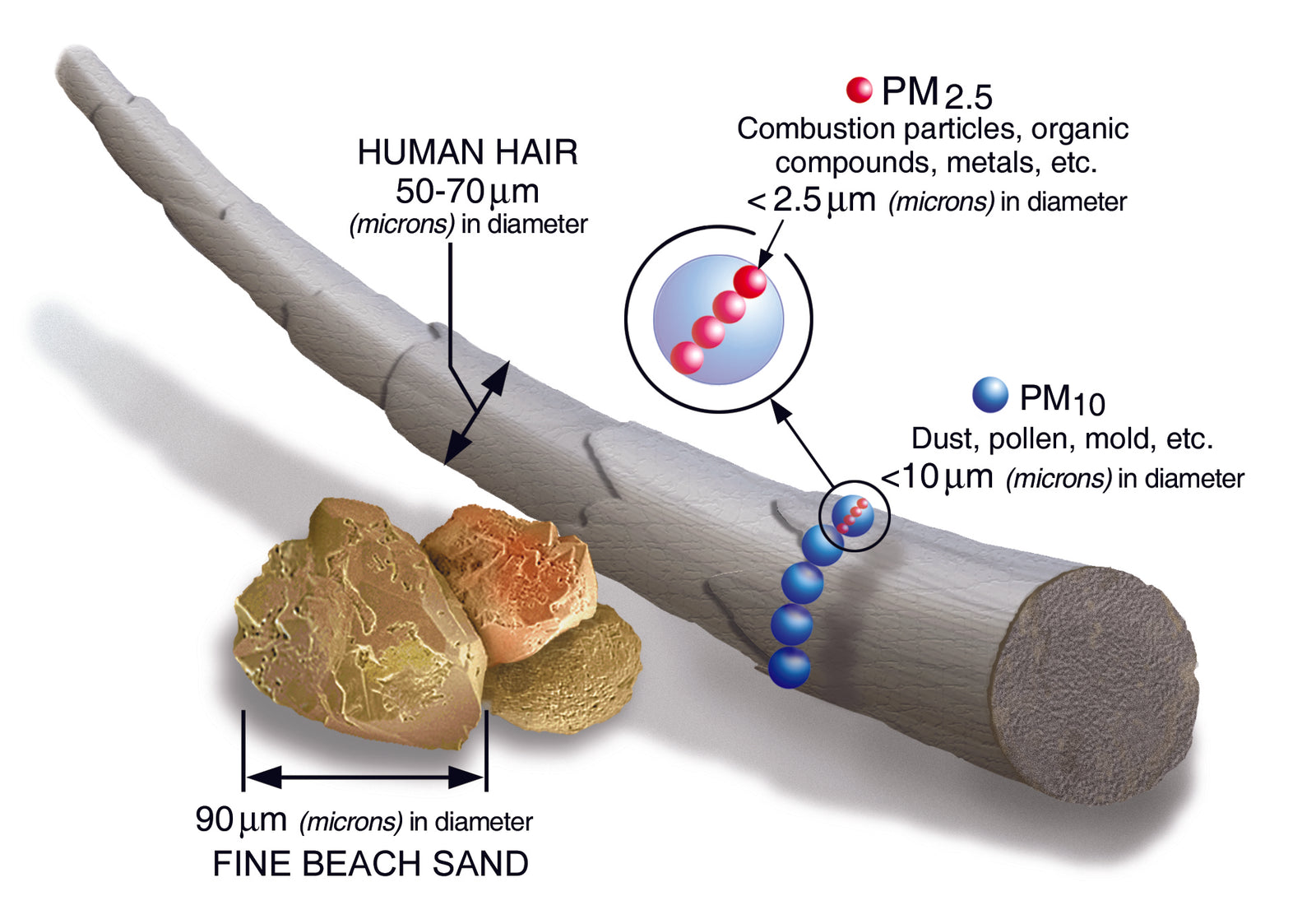Does UVC Sterilize the Covid-19?

The debate continues over the effectiveness of UV light on Covid-19, so I’d like to start this blog with my frequent disclaimer in the forward to ensure readers don’t miss this point. There are growing test results beginning to surface around UV sterilization of coronaviruses and similar viral pathogens, but none published (that I have access to) offer specific test results for SARS-CoV-2. The reason for this is certification requires the testing be performed at a Level 3 test facility. Biosphere test labs are designed to control and protect the spread of airborne, often lethal microbes. As you can imagine these labs are extremely busy focusing on a solution for this pandemic, and not entertaining every manufacturer hawking a new approach to eradicating the virus. You'll read references that Covid-19 is similar to SARS, or previous coronaviruses based on its cellular structure (similar to the corona shape found around the Sun) and airborne distribution, but this does not make the results identical. No products on our site, or that we’ve seen in the market, assures 100% effectiveness of UV light against the current coronavirus Covid-19.
Digging into to this could quickly become wordy so as not to lose everyone before I start let me state, the goal of this week’s blog is to identify several points to consider and help guide you on what to look for when researching UVC testing.
First, sterilization versus disinfection. Literature, including content on our site, references sterilization, but sterile is sterile. Scientists use the log system to measure levels of disinfection (sterilization). A “3” log reduction (Log-3) is equivalent to 99.9%, which is typically what you see on household and hand sanitizing products to define the kill rate of germs. The CDC publishes an extensive list of substances that meet this standard.
Germicidal UV often promote UV disinfection levels up to 99.99% “Log-4”. Obviously, better than simply using a chemical spray or wash, but's this still isn't sterile. Sterilization eliminates all forms of microbial life. This is achieved at the log of "6" or 99.9999%. Marketers and product teams will tout sterilization, this just isn’t accurate. UVC products can be used to disinfect (the process of elimination pathogenic microorganisms) the air, items, and surfaces.
UVC targets the basic building blocks of a microorganism the RNA, and DNA. Scientists have reported that in some microorganisms/viruses UVC at 250nm – 260nm will significantly destroy the RNA (nucleic acid sequences) essentially killing the virus. Other researchers report by targeting the DNA (protein) with 270-280nm light you disrupt its ability to perform normal cellular functions. LED manufacturers, which design LED beads to perform at specific spectrums, publish test data on coronaviruses suggesting traditional mercury-based lamps (253.7nm) take considerably longer (3X) to destroy specifically coronavirus cells. In theory, this makes sense, in practice, every virus is different so for some period, until accurate test data is available, expect more posturing from the two different camps.
If you place an item in a box and blast it with UVC for long enough you can achieve pretty high disinfection rates, but if you’re using a portable wand, your arm might get tired scanning those masks.
Effective disinfection is more than just spectrum, the light source should be close (2 to 4 inches) and should have sufficient power to be reliable. So how close and how much power? The Bumbling Biochemist provides this definition
Intensity at the light source & distance from the light source combines to give you the "irradiance," reported in milliwatts (mW) per square centimeter (cm²). Times that by how long the object is exposed to get the dose. If your times mW/cm² by seconds (s) you get mWs/cm² which is aka 1 mJ/cm². http://thebumblingbiochemist.com/
One of my favorite customers to discuss the emergence and relevance of ultraviolet light for disinfection purposes is Dr. George Stimac. Dr. Stimac has been researching UVC products for some time and has tested several of our products. What he focuses on is the various spectrums, intensity, and proximity. I thought it beneficial to share some of his efforts.
Here are my UVC meter readings:
3W Clamshell unit (gray): 1700 microwatts/cm2 on the lamp; 800 microwatts/cm2 1 inch away.
3W Clamshell unit (silver): 1900 microwatts/cm2 on the lamp; 1000 microwatts/cm2 1 inch away.
4W rechargeable wand: 770 microwatts/cm2 on the lamp; 500 microwatts/cm2 1 inch away.
I was a bit disappointed with the 4W unit expecting the extra watt of power to increase the UVC flux.
I suppose it really comes down to what tube they are using.
For a 2 log reduction in organisms (99% kill rate) for most viruses, you need 8,000 to 10,000 microwatts/cm2. That comes to 8 to 10 seconds for the clamshell and maybe 15 to 20 seconds for the 4W wand when held at 1 inch away from the targeted surface. Even less time if held closer. That's much better than all of the CDC's N list of disinfectants that need contact time usually of 5 to 10 minutes and the quickest, like isopropyl alcohol and hypochlorous acid (electrolyzed water) about 30 seconds to a minute and then the targeted surface gets wet.
So the small clamshell units would make a great mask sterilizer. I think the Nebraska Medical hospital during the peak of the pandemic was UVC sterilizing masks about 12X before changing them as the UV light would eventually reduce the effectiveness of the mask filtration. Also great for sanitizing mail and paper money and keypads and doorknobs. My only concern is that UVC degrades rubber seals and gaskets and some plastic surfaces by repeated exposure.
Thank you Dr. Stimac for running the numbers.
We’ll continue to study ultraviolet technologies and build and/or source products we believe benefit in the challenges we face today and into the future.
Also in News

An Unusual Journey to Normalcy

The History of Vaccines: What it Means for Coronavirus

